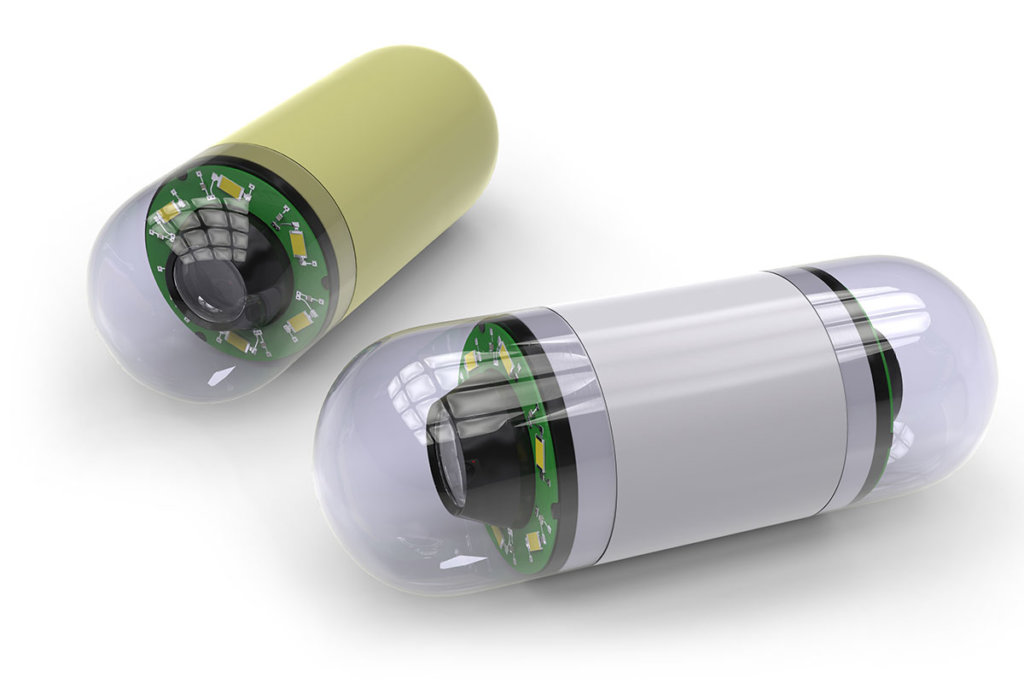
Nothing in the medical field is ever static, as new research, tools and techniques are perpetually changing and advancing illness prevention and treatment. This is perhaps doubly true in the field of gastroenterology, where addressing the issues related to the long, complex gastrointestinal tract leads to a constant evolution in new approaches. Keeping up requires ongoing education and vigilance.
Several new developments in the field are showing promise, whether already in use or on the horizon.
Here are four:
Hailed for its non-invasive nature, capsule endoscopy involves the patient swallowing a small, capsule-sized camera that moves naturally through the GI tract. It enables gastroenterologists to visualize the small intestinal region, localize bleeding sources, and identify conditions such as Crohn’s, polyposis syndrome, and tumors. It has its limitations, however—one of them being an inability to navigate the stomach for complete visualization.
Magnet-assisted capsule endoscopy is the newest iteration of the capsule approach for visualizing the stomach, with the scope controlled via a hand-held device or magnetized robot arm. The hope is that by adding the magnets, future iterations of capsule endoscopy will be able to better investigate the stomach and afford tissue sampling and even treatment.
Whether magnet-guided or not, capsule endoscopy still has a way to go before it proves to be the best choice.
“One of the deficiencies is that it is tough to localize where pathology is and do anything about it because the capsule keeps traveling,” says Dr. Karen L. Woods, who specializes in gastroenterology at Houston Methodist in Texas.
This technology “has enormous, transformative potential” in the field, Woods says. “In real time, it will aid with physician diagnosis and decision making,” she adds. “Ultimately, it may impact patient outcomes and cost of care.”
One area that may benefit, in fact, is capsule endoscopy because the AI would enable physicians to better see and understand what the camera is capturing as it goes by.
AI could help physicians lower their “miss” rates on pathologies, those times they do not see a condition that needs attention. “Physicians do miss polyps and cancers and AI could potentially alert them if they don’t see something, or help them understand what they’re seeing,” Woods says. “Real-time analysis during colonoscopy could be a critical development.”
AI could also assist physicians in determining whether or not they can remove some cancers via endoscope, lessening the number of interventions necessary. “Right now, there’s a lot that goes in to figuring that out, and it’s not in real time,” she says. “Having a program that could determine that immediately could be a real advantage.”
While clinically not in use at the moment, studies are underway and Woods predicts it could become viable within the next few years, for many areas of gastroenterology. Cost, however, remains its biggest barrier.
“If we can’t get reimbursement, we won’t be able to apply it when it's ready,” Woods points out.
Fueled by collaborations between physicians and engineers, potential breakthroughs are being seen in the use of robotics in endoscopy. The current design of flexible endoscopes offers limited instrument freedom—and this is an issue where robotics could play an integral role, experts say.
Endoscopic sub-mucosal dissection (ESD), for example, provides a higher resection rate for early GI cancers. But it also comes with a higher risk for complications—post-operative bleeding in particular—than what’s seen with conventional endoscopic resection.
Studies have revealed this is dependent on the operator’s precision. A robotic endoscopic platform could offer improved technique and outcome via more precise movement.
There is plenty of value in recording endoscopy procedures, both for clinical and teaching purposes. However, physicians sometimes fail to hit the record button on the instrument or setting up recording proves time-consuming and complex. Cloud computing has the potential to transform this aspect of GI tech.
Again relying on AI, new instruments are emerging that can detect when to start video recording during endoscopic procedures. When the physicians finish the procedure, the instruments compress, encrypt and store the video for future use.
“This is another realistic development,” says Woods, “but it will come down to the industry coordinating with IT to make it happen.”
Gastroenterology is a forward-thinking field and as quickly as new tools and techniques arise, researchers and physicians are at the ready to evaluate and implement them when proven feasible. For now, Woods points to AI as the area with the most potential to radically change and improve the procedures of the future.


